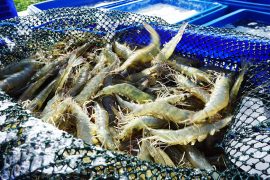
Bees need a balanced diet from various plants for optimal health
Bees, the unsung heroes of our agricultural systems, are facing a dietary crisis. As critical pollinators, they keep our food supply buzzing, but human-caused changes to the environment have left them with limited and often unhealthy foraging options. A new study is shedding light on the specific nutritional needs of bees and the plants that can provide them with a well-rounded diet.
Buzz on bee nutrition
Bees, like humans, require a balanced diet to thrive. While they get their energy from nectar, pollen is their primary source of proteins, lipids, and other essential nutrients. But not all pollen is created equal.
“Despite public interest and a rise in pollinator plantings, little is known about which plant species are best suited for bee health,” said Dr. Sandra Rehan of York University, the senior author of the study.
The research team, led by Dr. Rehan, analyzed the nutritional value of pollen from 57 plant species commonly found in North America. They focused on two key components of bee nutrition: non-esterified fatty acids (like omega-6 and omega-3) and essential amino acids.
Fuel from plants for bee health
Fatty acids play a vital role in the overall health and well-being of bees. These essential nutrients are the building blocks of cell membranes, contributing to a robust immune system that protects bees from diseases and parasites.
Additionally, fatty acids act as an energy source, fueling bees’ activities and extending their lifespan. However, maintaining the right balance of fatty acids is crucial. An imbalance can disrupt various physiological processes in bees.
For instance, insufficient levels of omega-3 fatty acids can impair bees’ cognitive functions, affecting their ability to learn, navigate, and communicate effectively.
Conversely, excessive amounts of omega-6 fatty acids can trigger inflammation and oxidative stress, leading to various health problems and potentially shortening their lifespan.
Amino acids: The building blocks of bee life
Essential amino acids are the fundamental building blocks of proteins, which are essential for various physiological processes in bees.
In the realm of cognitive function, these amino acids support the development and maintenance of the nervous system, facilitating learning, memory, and decision-making abilities in bees.
Additionally, they play a crucial role in reproduction, contributing to the production of eggs and sperm, as well as the overall development of bee larvae.
However, while essential amino acids are vital, overconsumption can have negative consequences. An excess of these amino acids can create an environment within the bee’s body that is more favorable to parasites.
This can increase the susceptibility of bees to parasitic infections, potentially leading to health issues and decreased overall fitness.
Diverse diet from plants is key
The study found that no single plant species provides the optimal balance of nutrients for bees. Instead, bees need to forage from a variety of plants to get the right mix of fatty acids and amino acids.
“There is a potential tradeoff between fatty acid and amino acid content within pollen, suggesting that a diverse floral diet may benefit bees more than a single pollen source,” explained Dr. Rehan. “No one plant species is optimal for generalist wild bee health.”
Best plants for bees
While variety is important, the study did identify several plant families that are particularly nutritious for bees. These include roses, clovers, red raspberry, and tall buttercup.
“Based on their ideal protein to lipid ratios for wild bee nutrition, we recommend that pollen species from roses, clovers, red raspberry, and tall buttercup should be emphasized in wildflower restoration projects,” said Dr. Rehan.
Implications for conservation
This research has important implications for bee conservation efforts. By understanding the specific nutritional needs of bees, we can create more effective pollinator gardens and habitat restoration projects.
“We hope this work will help inform flowering plant selections for pollinator gardens,” said Dr. Rehan.
The study also highlights the importance of preserving native plant diversity. While the research found no significant nutritional difference between native and introduced plant species, maintaining a diverse array of native plants ensures that a wide range of bees, including specialist species, have access to the specific pollen they need.
Bee nutrition and plant research
The study is just the beginning of our understanding of bee nutrition. With thousands of plant species yet to be analyzed, there is much more to learn about the complex relationship between bees and their floral food sources.
“We hope this will inspire future similar research as well as follow up studies on the preference and survival of bees on different diets,” noted Dr. Rehan.
As we continue to explore the intricate world of bee nutrition, one thing is clear: a diverse and balanced diet is essential for the health and well-being of these vital pollinators.
By creating a smorgasbord of floral options, we can help ensure that bees continue to buzz, thrive, and play their crucial role in our ecosystems and food systems.
The study is published in the journal Frontiers in Sustainable Food Systems.
—–
Like what you read? Subscribe to our newsletter for engaging articles, exclusive content, and the latest updates.
Check us out on EarthSnap, a free app brought to you by Eric Ralls and Earth.com.
—–













